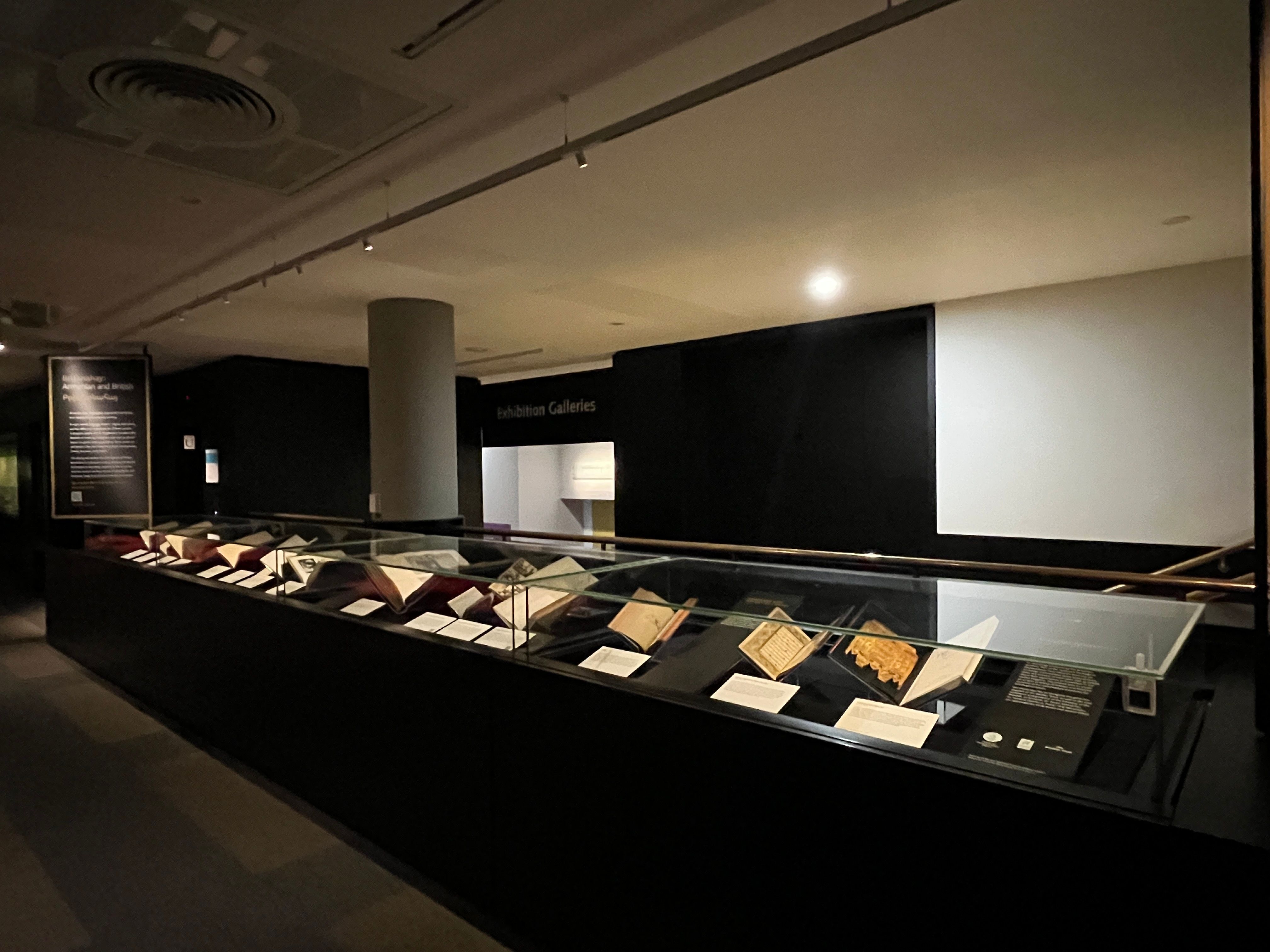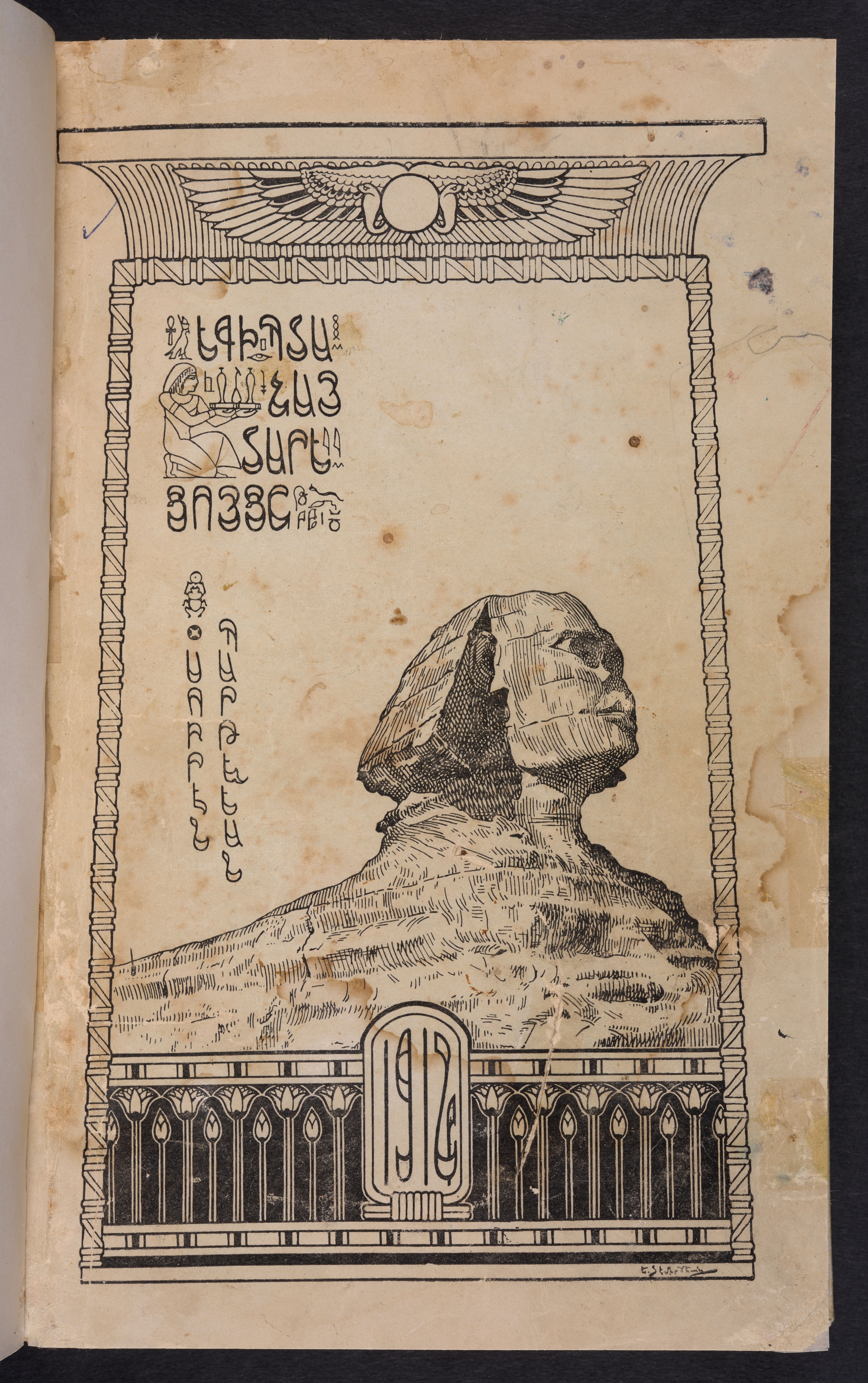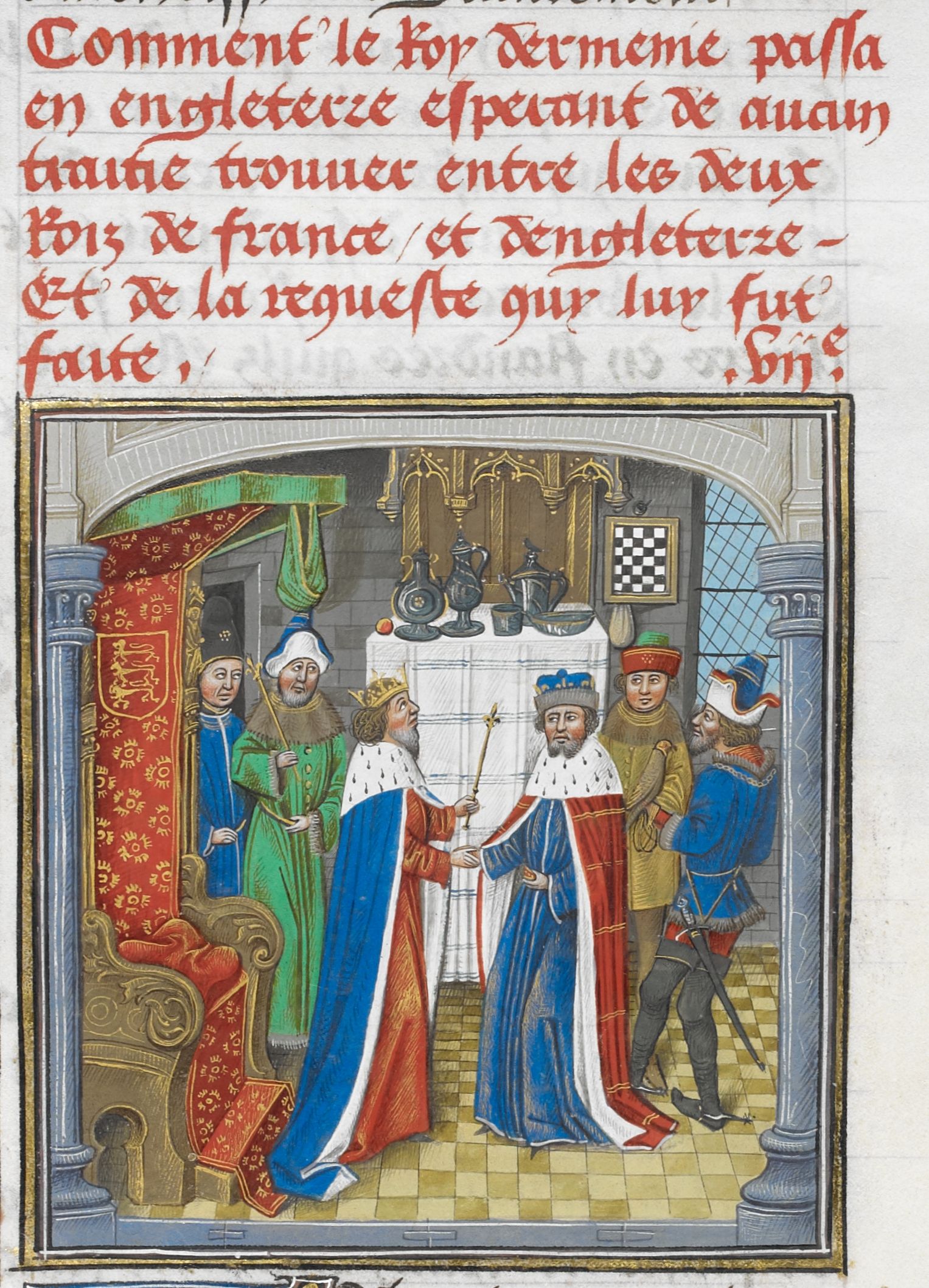Display on Armenian-British history
Uncover a unique view of Armenian-British history in our new free display.
9 October 2025Uncover a unique view of Armenian-British history in our new free display.
9 October 2025
Blog series Knowledge Matters
From 27 September 2025 until 22 February 2026, the Sir John S. Ritblatt Treasures Gallery offers visitors a unique view of Armenian-British history.
Entitled Britanahay Բրիտանահայ: Armenian and British, the four-case display highlights Armenian-British communities and interactions. It’s an interactive experience with QR codes linking to oral history interviews. These were collected by the Armenian Institute as part of their Heritage of Displacement: Oral History from the UK Armenian Communities (2023-2026) project. The recordings emphasise the evolving nature of Armenian-British identity.

A Sphinx and hieroglyphs matched with Armenian script to mark out the dual identities in this Armenian-Egyptian almanac from 1914. (Egiptahay taretsʿoyts, 17070.d.28).
Britanahay is a gateway to the Armeno-British stories that can be discovered in the Library's collections. It is divided into three sections. The first looks at the Armenian presence in this country and includes a few firsts: the first Armenian book printed in London in 1736 (Movsēs Khorenats’i’s History of the Armenians/Մովսէս Խորենացիի Պատմութիւն հայոց) and an accounts book from the first purpose-built Armenian cathedral in Western Europe, the Holy Trinity Cathedral, constructed in Manchester in 1870.
The section also includes everyday materials, such as the community newspaper Aregak (Արեգակ; Sun), published in south-west London in the 1960s and 70s, and an illustrated book of Armenian tales and legends.
The second section of the display focuses on Armenian communities in territories under British control. The first interaction of Armenian and English heads of state is highlighted by the exquisite Anciennes et Nouvelles Chroniques de l'Angleterre (Royal MS 14 E IV) that includes an illustration of King Richard II of England meeting King Levon V of Cilicia.

King Levon V of Cilicia meets King Richard II of England in Westminster according to the Anciennes et Nouvelles Chroniques de l’Angleterre (Royal MS 14 E IV, f 259v).
As a diasporic people, Armenians encountered the British across wide swathes of Asia and Africa. These meetings are highlighted by a variety of collection items: an Armeno-Egyptian almanac; educational and promotional materials from Cyprus; and a memorial publication of Azdarar (Ազդարար; Reporter) – the first non-English newspaper published in India in 1794.
The final case of the display turns the investigatory lens onto the Library itself. Thanks to the groundbreaking work of scholars such as Dr. Talinn Grigor, Dr. Houri Berberian and Dr. Alyson Wharton-Durgaryan, we are beginning to understand the profound impact of wealthy Armenian mercantile families (Amiras) on the history of museum and library collections.
Two display items explore different aspects of this development. The first is reflected in a stunning 18th-century grammar of Persian in Ottoman Turkish (Or 5097), purchased from Dikran Kelekian in 1897. Next to it sits the catalogue Treasures from the Ark: 1700 Years of Armenian Christian Art. This beautifully-illustrated volume, authored by former Lead Curator of the Christian Orient at the British Library, Father Vrej Nersessian, harkens back to the first flagship exhibition held in the Library’s St. Pancras Building.
Overall, Britanahay aims to spark visitors’ curiosities about the lives and experiences of Britanahayer (Armenian Britons). Along with the engaging excerpts from the Armenian Institute’s Heritage of Displacement interviews, it shows what fascinating life stories can be unlocked when you register as a Reader.
Britanahay Բրիտանահայ: Armenian and British is free of charge and runs from 27 September – 22 February 2026 in the Sir John S. Ritblatt Treasures Gallery. It is supported by the Armenian Institute and the Benlian Trust.

This blog is part of our main British Library series, Knowledge Matters. Join us to look at the strategic bigger picture at the UK national library and get behind the scenes on a wide range of activities, projects and programmes. It features contributions by experts and managers from across the Library’s departments and locations.

You can access millions of collection items for free. Including books, newspapers, maps, sound recordings, photographs, patents and stamps.